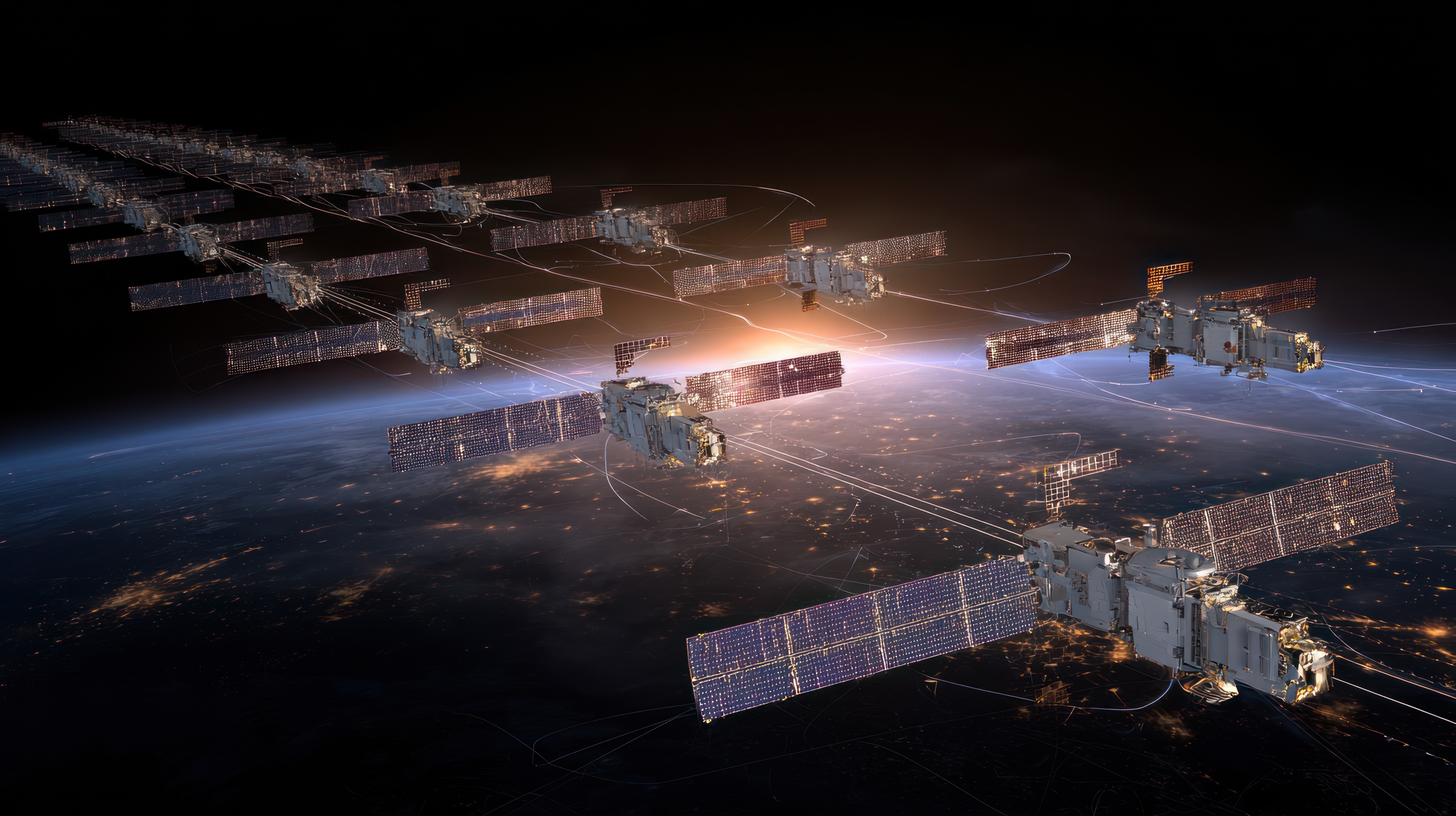Satellite mission planning has entered a new era of autonomy and scale. As the demand for high-resolution remote-sensing data accelerates, traditional single-satellite scheduling models struggle to meet the volume, precision, and response requirements of modern observation missions.
Today’s multi-satellite constellations are tasked with imaging dense clusters of targets, performing real-time reconfiguration, and maintaining operational efficiency under dynamic constraints such as orbital geometry, power, and bandwidth.
The challenge lies in allocating limited satellite resources to maximize data return and coverage, while ensuring that the planning process remains flexible, fault-tolerant, and computationally efficient.
From Centralized Control to Autonomous Coordination
Cooperative satellite networks have been relying on a centralized control model; one management satellite handled planning, while sub-satellites executed commands. Although effective in early missions, this structure created a single point of failure and limited scalability.
The emergence of autonomous, multi-agent satellite systems changes that paradigm. In these networks, each satellite (or Agent) possesses local decision-making ability, allowing it to plan, execute, and re-plan missions independently within global constraints. This distributed autonomy transforms constellations into intelligent, self-organizing systems capable of real-time adjustment to orbital shifts, environmental factors, or onboard anomalies.
To make such coordination practical, researchers are moving beyond hierarchical scheduling frameworks toward collaborative models that combine autonomy with cooperation. One such approach is the Multi-Dimensional and Multi-Agent Clusters Collaboration Model (MDMA-CCM)—a new generation of satellite scheduling architecture that enables intelligent collaboration, adaptive task allocation, and dynamic re-planning across large-scale constellations.
Multi-Dimensional and Multi-Agent Collaboration
To address the growing complexity of constellation management, MDMA-CCM allows a scheduling framework that integrates task preprocessing, allocation, scheduling, and fault re-planning into a unified process.
At its core, MDMA-CCM improves system resilience by enabling satellites to collaborate —a market-like negotiation mechanism. Each satellite evaluates potential tasks based on visibility, time windows, and conflict likelihood, then bids or delegates tasks dynamically.
This distributed negotiation enhances flexibility and responsiveness, allowing the constellation to maintain operational integrity even under component failures or shifting observation priorities.
Task Clustering: Enhancing Observation Efficiency
In real-world Earth observation, targets are often geographically concentrated—such as disaster zones, agricultural belts, or coastal monitoring regions. Traditional scheduling assigns these targets one by one, burdening the central planner and lowering efficiency.
The task clustering approach transforms this process. By grouping closely located targets into sets based on latitude–longitude distance (see equations below), the system allows satellites to execute multiple observations in a single coordinated sweep:

If the distance between two targets is less than the defined clustering radius Mdist , they are merged into the same cluster:

These clusters are then assigned to worker satellites, each autonomously optimizing its internal task order to minimize maneuver time and maximize energy efficiency. The result: higher throughput, reduced computational burden, and better use of available orbits and sensors.
Autonomous Re-Planning Under Failure Conditions
Even with sophisticated algorithms, failures—whether hardware or communication—remain inevitable.
The Interactively Re-Planning Method (IRM) complements MDMA-CCM by introducing adaptive task redistribution. When a satellite becomes non-operational, its assigned tasks are dynamically re-evaluated and reallocated among the remaining Agents.
This secondary allocation strategy ensures that observation continuity and mission efficiency are preserved, preventing data gaps and mission degradation.
Why Traditional Algorithms Fall Short
Satellite scheduling is fundamentally an NP-complete problem—the computational load grows exponentially with the number of tasks and satellites. Classical algorithms such as greedy heuristics, branch-and-bound searches, or genetic algorithms (GA) have been applied successfully at small scales.
As constellation sizes expand into hundreds, these methods reach practical limits. They lack the ability to self-adapt, handle uncertain conditions, or maintain performance under real-time operational stress.
This limitation underscores the need for autonomous, learning-based, and multi-agent frameworks that can scale linearly with the number of satellites while maintaining solution quality and speed.
Scaling Mission Efficiency Through Advanced Simulation
The success of models like MDMA-CCM depends heavily on accurate simulation environments and digital twins. Through simulation, planners can model satellite visibility, energy consumption, and communication constraints under varying orbital scenarios—testing how different allocation strategies impact system-wide performance before deployment.
Digital twins extend this concept by mirroring the real satellite network in real time, continuously learning from telemetry data. This allows operators to anticipate resource bottlenecks, optimize scheduling on-the-fly, and evaluate fault recovery strategies in a safe virtual environment.
In an era of expanding satellite constellations, Quantum enhanced simulation-driven mission planning is no longer optional; it is the foundation of sustainable, scalable, and autonomous space operations.
The transition from single satellite planning to multi-agent autonomous scheduling marks a defining shift in how space missions are managed. By integrating task clustering, distributed collaboration, and adaptive re-planning, modern mission allocation frameworks like MDMA-CCM deliver a practical path forward—one where constellations operate collaboratively, learn continuously, and recover intelligently.





.png)
.png)




.svg)
.svg)
.svg)
.svg)